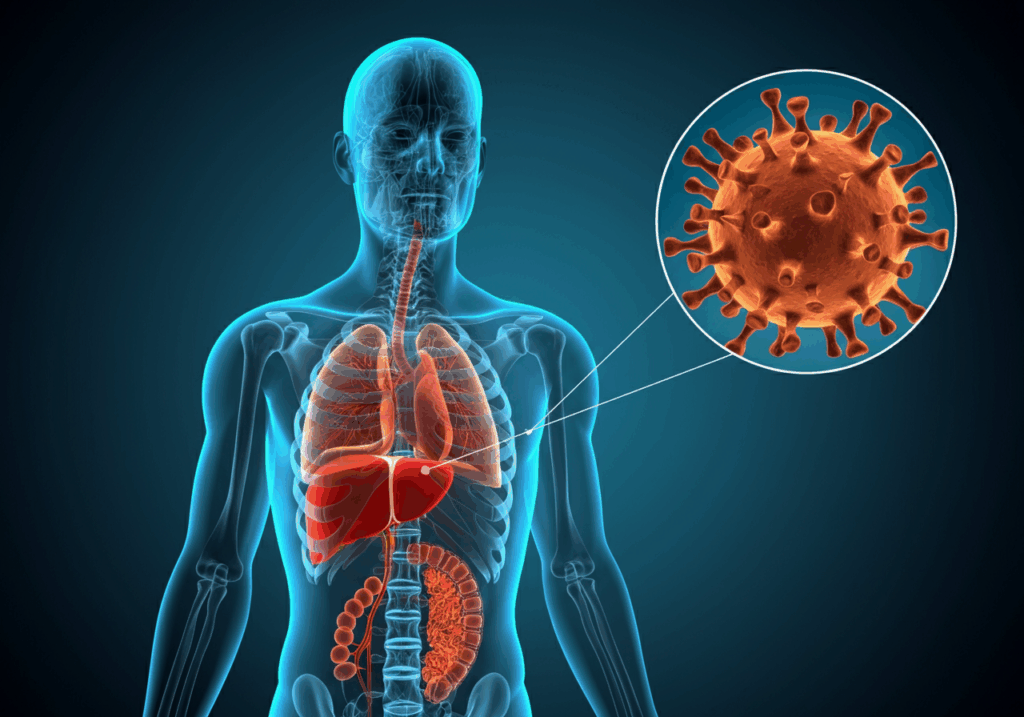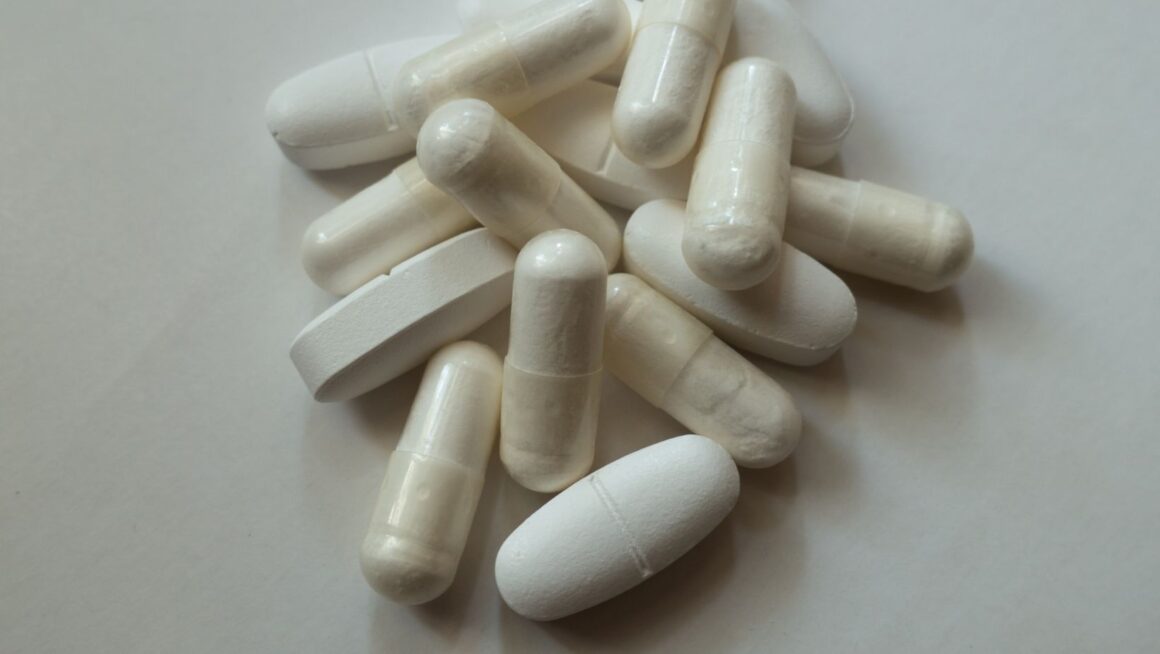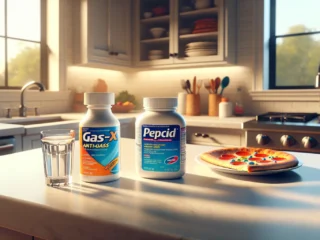
When people ask, “What does hepatitis C look like?” they’re often hoping for a clear visual sign they can recognize. The truth is: hepatitis C doesn’t always “look” like anything at first. Many people with the virus have no noticeable symptoms for years.
That’s why hepatitis C is sometimes called a “silent infection.” By the time visible signs appear—like jaundice (yellowing of the skin and eyes) or swelling—it may mean the liver has already suffered damage.
In this article, we’ll break down what hepatitis C looks like in its early and late stages, which symptoms to watch for, how doctors actually diagnose it, and what treatments are available today.
What is hepatitis C?
Hepatitis C is a viral infection that attacks the liver, caused by the hepatitis C virus (HCV). It spreads mainly through blood-to-blood contact. Unlike hepatitis A or B, there is currently no vaccine for hepatitis C.
How common is it?
- About 58 million people worldwide live with chronic hepatitis C [WHO, 2023].
- Around 2.4 million people in the United States have it [CDC, 2023].
- Many don’t know they’re infected, because the disease often has no early symptoms.
How is it spread?
- Sharing needles, syringes, or drug equipment
- Receiving blood transfusions or organ transplants before 1992 (before routine screening)
- Unsterile tattoo or piercing equipment
- Less commonly, sexual contact or mother-to-child transmission
The biggest challenge is that hepatitis C is invisible at first—making testing critical.
What does hepatitis C look like in the early stages?
In the acute phase (first 6 months after infection):
- Most people have no visible symptoms.
- About 20–30% may develop:
- Fatigue
- Mild fever
- Nausea or stomach discomfort
- Dark urine
- Jaundice (yellowing of eyes/skin)
But these early signs often go unnoticed or are mistaken for the flu.
What does hepatitis C look like in chronic infection?
If the virus stays in the body longer than 6 months, it’s considered chronic hepatitis C. Over years, liver damage may cause:
- Jaundice: Yellow eyes/skin
- Spider angiomas: Small, web-like blood vessels on skin
- Ascites: Swelling in the abdomen from fluid buildup
- Edema: Swelling in legs and feet
- Bruising easily: Due to reduced clotting proteins
- Fatigue and weakness
These changes reflect liver damage—not the virus itself.
What does hepatitis C look like on the skin?
Some people develop skin-related symptoms, including:
- Rashes or itchy skin
- Lichen planus (purple, itchy bumps)
- Vasculitis (inflammation of blood vessels, causing red spots)
- Palmar erythema (red palms)
Skin symptoms are often secondary effects of liver inflammation or immune response.

What does hepatitis C look like on tests?
Doctors don’t rely on visible signs alone—they use medical tests to confirm hepatitis C:
- Blood tests (HCV antibody test, RNA PCR test)
- Liver function tests (ALT, AST levels)
- Imaging scans (ultrasound, elastography) to check scarring
- Liver biopsy in some cases
Even without visible symptoms, a blood test is the only way to know for sure.
Misconceptions about “what hepatitis C looks like”
- Myth: You can always tell if someone has hepatitis C by looking at them.
- Fact: Most people look completely healthy in early stages.
- Fact: Most people look completely healthy in early stages.
- Myth: Jaundice always appears right away.
- Fact: Jaundice usually happens after significant liver damage.
- Fact: Jaundice usually happens after significant liver damage.
- Myth: Hepatitis C always progresses to cirrhosis.
- Fact: With treatment, cure rates exceed 95%.
- Fact: With treatment, cure rates exceed 95%.
Treatment: What happens if you test positive?
- Direct-acting antivirals (DAAs): Oral medications taken for 8–12 weeks cure most cases.
- Monitoring: Regular blood tests track viral clearance.
- Lifestyle: Avoid alcohol, eat a balanced diet, maintain healthy weight.
- Follow-up: Even after cure, regular liver checks may be needed if damage was advanced.
Prevention tips
- Never share needles or syringes.
- Make sure tattoos/piercings use sterile equipment.
- Practice safe sex (though transmission risk is lower than HIV).
- Get screened if you were born between 1945–1965 or have risk factors.
FAQs about hepatitis C
1. What does hepatitis C look like on the outside?
Often nothing. Visible signs like jaundice appear only after significant liver damage.
2. Can you see hepatitis C in the eyes?
Yes—yellowing of the whites of the eyes (jaundice) may occur in advanced disease.
3. How long does it take for hepatitis C to show symptoms?
Anywhere from weeks to decades. Many people feel fine for years.
4. Does hepatitis C always cause skin rashes?
No. Skin issues may appear in some but not all patients.
5. If I feel healthy, do I still need testing?
Yes. Many people with hepatitis C feel well but still have liver damage.
Final thoughts
So, what does hepatitis C look like? In many cases, it doesn’t “look” like anything—especially early on. The virus often stays hidden until it causes serious liver problems. Visible signs like jaundice, swelling, or skin changes usually indicate advanced damage.
The only reliable way to know if you have hepatitis C is to get tested. The good news: today’s treatments cure more than 95% of cases, and the earlier you find it, the better your liver can recover.
Ribbon Checkup offers at-home liver health tests that provide lab-quality insights—so you can monitor your liver and take action early.
References
- World Health Organization (WHO). (2023). Hepatitis C fact sheet.
- Centers for Disease Control and Prevention (CDC). (2023). Hepatitis C FAQs for the public.
- Mayo Clinic. (2023). Hepatitis C: Symptoms and causes.
- American Liver Foundation. (2024). Hepatitis C overview.
- National Institute of Diabetes and Digestive and Kidney Diseases (NIDDK). (2024). Liver disease and hepatitis C.












